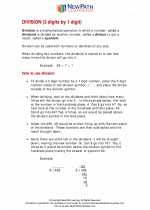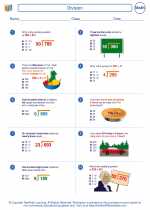Probability
Probability is a branch of mathematics that deals with the likelihood of an event occurring. It is used to quantify uncertainty and make predictions based on data and analysis. Understanding probability is important in various fields such as statistics, economics, and science.
Basic Concepts
There are several key concepts to understand when learning about probability:
- Sample Space: The sample space is the set of all possible outcomes of a random experiment. For example, when rolling a fair six-sided die, the sample space is {1, 2, 3, 4, 5, 6}.
- Event: An event is a subset of the sample space, representing a specific outcome or a set of outcomes. For example, getting a 4 when rolling a die is an event.
- Probability of an Event: The probability of an event, denoted as P(event), is a number between 0 and 1 that represents the likelihood of the event occurring. A probability of 0 means the event is impossible, while a probability of 1 means the event is certain to occur.
- Probability Rules: There are several rules that govern how probabilities behave, such as the addition rule (P(A or B) = P(A) + P(B) - P(A and B)) and the complement rule (P(not A) = 1 - P(A)).
Calculating Probability
There are different methods for calculating probability, depending on the type of experiment and the information available. Some common approaches include:
- Classical Probability: In classical probability, the probability of an event is calculated based on the ratio of favorable outcomes to the total number of outcomes. This method is used for simple, equally likely scenarios.
- Relative Frequency: Relative frequency probability is based on observing past outcomes to estimate the likelihood of future events. It involves collecting data and calculating the proportion of times an event occurs.
- Subjective Probability: Subjective probability is based on personal judgment and is often used when there is no historical data available. It involves estimating the likelihood of an event based on one's own knowledge and beliefs.
Study Guide
When studying probability, it's important to focus on the following key areas:
- Understanding the basic concepts of sample space, events, and probability rules.
- Practicing calculations of probability using different methods, such as classical and relative frequency approaches.
- Applying probability concepts to real-world scenarios, such as games of chance, weather forecasting, and risk analysis.
- Mastering the use of probability rules to solve problems involving multiple events, such as independent and dependent events.
- Exploring advanced topics in probability, such as conditional probability, expected value, and probability distributions.
By mastering these key areas, you will develop a strong foundation in probability and be able to apply it to a wide range of practical situations.
[Probability] Related Worksheets and Study Guides:
.◂Math Worksheets and Study Guides Sixth Grade. Division
Study Guide Division
Division  Worksheet/Answer key
Worksheet/Answer key Division
Division  Worksheet/Answer key
Worksheet/Answer key Division
Division  Worksheet/Answer key
Worksheet/Answer key Division
Division 

 Worksheet/Answer key
Worksheet/Answer key
 Worksheet/Answer key
Worksheet/Answer key
 Worksheet/Answer key
Worksheet/Answer key

The resources above cover the following skills:
Connections to the Grade 6 Focal Points (NCTM)
Number and Operations: Students' work in dividing fractions shows them that they can express the result of dividing two whole numbers as a fraction (viewed as parts of a whole). Students then extend their work in grade 5 with division of whole numbers to give mixed number and decimal solutions to division problems with whole numbers. They recognize that ratio tables not only derive from rows in the multiplication table but also connect with equivalent fractions. Students distinguish multiplicative comparisons from additive comparisons.